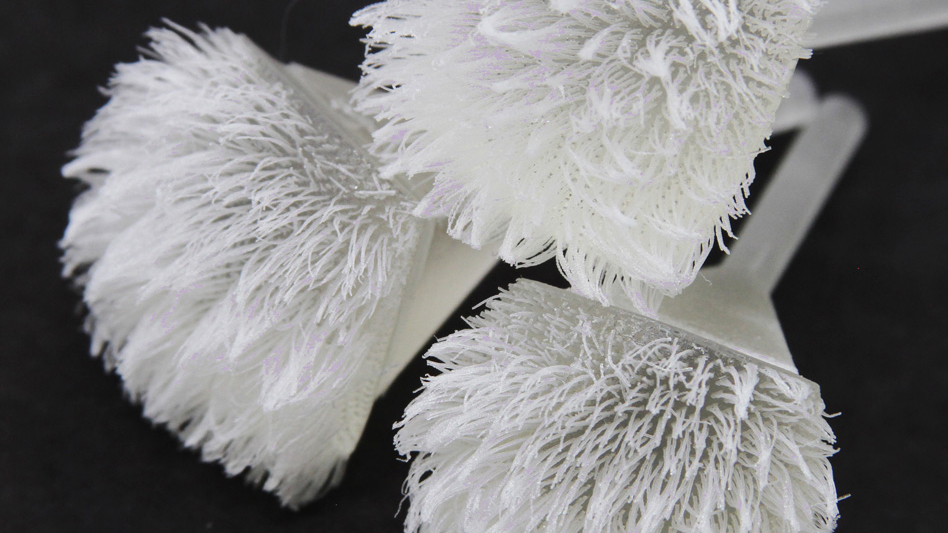To baldly go: scientists have found a way to 3D print hair
The Grateful Head

Creating hair, fur, bristles and brushes on a 3D printer is a real pain. It's not a hardware issue; most 3D printers can cope with filaments of plastic just fine. Instead it's a software problem - you have to design and place each hair individually in a CAD program, which takes hours.
Now, however, software engineers at MIT's Media Lab have a solution - they've created a method to quickly and efficiently model and print thousands of hair-like structures on a curved or flat surface of an object.
The software platform that they built to run it, which is called Cilllia, allows users to define the angle, thickness, density and height of thousands of hairs in just a few minutes. It can cope with coarse bristles, fine fur, and even structures as thin as real human hair.
That could mean 3D-printed wigs and hair extensions on shelves soon, but the main goal of the project is actually to see if 3D-printed hair could perform other tasks. In the natural world, hair-like structures perform many diverse tasks from sensing, to adhesion, to moving objects around.
Tunable and Controllable
So far, they've managed to create arrays of hairs the can stick to each other like velcro, that can detect when a person strokes a surface in certain directions, and that can even sort coins by weight.
"It's very inspiring to see how these structures occur in nature and how they can achieve different functions," said Jifei Ou, lead author of a paper describing the project.
"We're just trying to think how can we fully utilize the potential of 3D printing, and create new functional materials whose properties are easily tunable and controllable."
Get daily insight, inspiration and deals in your inbox
Sign up for breaking news, reviews, opinion, top tech deals, and more.
"With our method, everything becomes smooth and fast," he added. "Previously it was virtually impossible, because who's going to take a whole day to render a whole furry rabbit, and then take another day to make it printable?"
- Duncan Geere is TechRadar's science writer. Every day he finds the most interesting science news and explains why you should care. You can read more of his stories here, and you can find him on Twitter under the handle @duncangeere.
